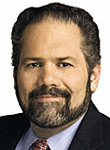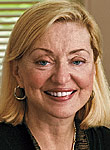Award-winning journalist Ray Suarez discusses the cultural shift that is changing the face of the United States and why that change reflects a positive continuation of a robust immigrant tradition in an address at Lawrence University.

Suarez, a senior correspondent for PBS’ “The NewsHour,” presents “The Browning of America,” Tuesday, Oct. 5 at 11:10 a.m. in the Lawrence Memorial Chapel, 510 E. College Ave., Appleton. Suarez also will conduct a question-and-answer session at 2 p.m. in the Warch Campus Center cinema. Both events, part of Lawrence’s 2010-11 convocation series, are free and open to the public.
Demographers estimate that by 2042, the United States will be a country with a “minority majority.” Suarez will examine the continuously widening definition of who is a “real American” and the impact of the country’s evolving ethnic make-up on schools, commerce, politics and the workforce.
Since 1999, Suarez has served as a senior correspondent for PBS’ “The NewsHour.” He previously spent seven years as host of National Public Radio’s “Talk of the Nation” program. In addition to his PBS duties, Suarez hosts the monthly foreign affairs radio program “America Abroad” for Public Radio International and the weekly politics program “Destination Casa Blanca” for the Hispanic Information Telecommunications Network, HITN TV.
Suarez is also the author of two books, “The Holy Vote: The Politics of Faith in America,” and 1999’s “The Old Neighborhood: What We Lost in the Great Suburban Migration.”
A native of Brooklyn, N.Y., Suarez is a life member of the National Association of Hispanic Journalists and a founding member of the Chicago Association of Hispanic Journalists.
